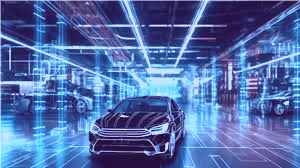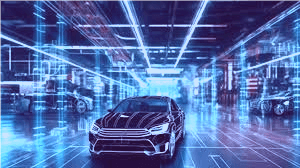Introduction
The transport space in India is experiencing a paradigm shift due to the economic boost and urban development. The term “Bharat Mobility” suggests both the scope and constraints present in the mobility ecosystem. Along with electric vehicles, technology-driven autonomous transport solutions are coming to the fore as well. One of the activities that stand out as a part of this shift is the Bharat Mobility Global Expo which becomes a confluence for world leaders and innovators to debate and shape the mobility narrative in India.
The Terrain of Indian Mobility
A deep increase in the growth of the Indian economy coupled with a growing need for the establishment of a better sustainable alternative is the current situation of Indian mobility. The vast urban population reaching more than 1.4 billion people has put a strain on the transportation in India. Excessive fuel prices, poor infrastructure for public transport, and over crowded roads are just a few of the issues in the ecosystem of mobility in the country.
Nevertheless, India is also undergoing a digital and technological change that is accompanied by the mobility industry. The future of India’s transportation is including smart cities, green technology, electric cars and mobility as a service (MaaS). Such developments are intended to address issues of traffic, emissions and energy consumption.
Bharat Mobility and Why Change is Needed
The mobility issues of India are extremely complex. The increase of the population in the cities has contributed to the dramatic increase in the number of vehicles on the streets. In urban centers like Delhi, Mumbai and Bengaluru, traffic is a normal occurrence which brings lost hours, diseases and environmental harm.
In addition, the prescription of petroleum products by India leads to air pollution and global warming. The Indian government has been working to counteract these problems by encouraging policies and practices to build sustainable transport systems. Among the consequences is the promotion of electric vehicles, cleaner technologies and enhanced infrastructure including the Bharat Mobility movement which is at the center of this change.
In India, there is a growing need for electric vehicles (EVs) which will help cut greenhouse gas emissions, and create jobs within the clean energy sector. Given that India is one of the largest vehicle markets in the world, enabling EVs will also lead to greater energy self-sufficiency. Furthermore, the younger population in India is becoming more aware of issues concerning the environment and therefore are prioritizing the usage of sustainable means of transport.
Significant Factors Influencing Bharat Mobility
A number of trends are changing the way mobility is perceived in India today:
Electric Vehicles (EVs): There is an increasing penetration of EVs in India due to the provision of subsidies by the government, the rising cost of fuel, and the growing concern for the environment. Tata Motors, Mahindra Electric, Ather Energy and Ola Electric are actively engaged in manufacturing electric two wheelers and cars. Bharat Mobility’s vision aims at accelerating the development of the electric mobility ecosystem. FAME, the adoption programme that encourages consumers and manufacturers to use and produce electric and hybrid vehicles, is also very important in this transition.
Autonomous Cars in India: The Indian car market is still in transition, but autonomous vehicles are bound to be an integral part of the mobile ecosystem in the country. The self-driving vehicle technology offers opportunities to reduce the number of road accidents, enhance traffic efficiency as well as optimize transportation. A number of foreign car manufacturers alongside local Indian companies are actively trying out autonomous technologies in this market.
Shared Mobility: The shared economy introduced by ride-hailing apps, like Uber and Ola, car and bike sharing platforms have transformed the whole notion of transportation in urban centers across the globe. With persistent fuel crises or high volumes of traffic, shared mobility apps are gaining more popularity as the service is easy and cost-saving.
Smart Cities and Mobility as a Service (MaaS): Vital for the achievement of transportation and urban planning goals in India, smart cities being developed in the country are enhancing the development of multi-modal transport systems. Users can utilize a single Point of access to plan, book and pay for completely different transport services, thanks to the effort of unaffiliated developers around the globe who set out to solve such issues, called MaaS. This is useful in developing efficient and effective multi modal transport systems that are helpful to travelers by saving their time and decongesting the transport system.
Sustainable Mobility: A notable element of Bharat Mobility and sustainable green technologies is investment in clean mobility systems which includes hydrogen vehicles, biofuels, and even solar-powered vehicles. Governments and private companies continue to invest in sustainable transportation technologies.
The Bharat Mobility Global Expo
For the purpose of promoting the countries vision for the future of mobility, the Bharat Mobility Global Expo is a vital tool. This is an annual event which brings with it a variety of stakeholders including automotive manufacturers, politicians, tech developers, inventors, and business people and takes pride in mobility systems to turn the vision of mobility into reality in the future through technology advancements.
Innovative electric and self-driving cars, mobility products, and infrastructure tech displays all of which can promote knowledge sharing, facilitate networking, and innovation are presented at the expo. This event also allows the government to present and explain policies and regulations aimed at fostering India’s sustainable mobility.
The ambitions that the Bharat Mobility Expo has predicted for itself within the next three years, namely for new International players as well as startups to attend and display their latest automotive innovations, seem to culminating into reality, with it being planned to encompass a greater scope and scale in the year 2025. Another dimension that will be part of discussions during the fair will be looking at the indicators for a transition to International Transport Networks focussing on Electric Vehicles.
The Role of Policy and Government Initiatives
The Indian Government policies and programs coincide perfectly with the vision Bhart Mobility aims to achieve, with programs in place relationally to transforming the Nation through electric vehicles. There have been targets laid down for carbon emissions by the government of India along with moving towards newer systems of transportation which are cleaner. Including the following initiatives that have been identified:
Others include NEMMP Zambia 2020: The goal is to ensure that the use of electric vehicles in India will become mainstream, and that both manufacturers and users will be given a focus. India intends to deploy up to six to seven million electric vehicles until 2020.
Additionally, one such scheme includes FAME AC India 2010, which aims to support the purchase or leasing of electric motorcycles and unusual vehicles. A broad range of vehicles, including electric motorcycles and three-wheeled vehicles, as well as cars and two-wheelers, are included in this program. FAME also aims to facilitate electric vehicle charging infrastructure.
Smart Cities Mission: The government aims at making Smart Cities in India with its Smart Cities Mission so as to have thousand smart cities in the country. It is important that all urban centers include modern technologies geared towards improving urban infrastructure and mobility. The government aims at decongesting urban areas by promoting use of mass transport, shared mobility and non-motorized transport to combat environment deterioration.
National Policy on Biofuels: Biofuels in the form of ethanol and so forth are encouraged under this policy to be used in transportation. With this, India will cut down on its reliance on fossil sources of energy while at the same time fostering clean and green energy solutions.
Bharat Stage Emission Standards: The basis behind the introduction of the Bharat Stage VI (BS-VI) emission regulations is to curb and restrain the amount of vehicle emissions discharged into the atmosphere in India. This emission benchmark conforms to international standards and translates to cleaner vehicles on our roadways.
Challenges and Opportunities
India has made considerable steps in the promotion of a sustainable mobile future but there still lies several challenges ahead. Among them are:
Infrastructure Development: The unavailability of charging infrastructure for EVs remains a big barrier on how wide EVs can be accepted. Though there is a growth in the number of charging stations in metropolitan regions, this presence is less in smaller towns and rural areas. Creating a nationwide charging network is essential for the progression of the EV market.
Consumer Awareness: A big part of the Indian market is still unaware of the advantages of the electric vehicles segment. A combination of informative awareness programs and lucrative offers will need to be put in place to ensure market penetration of EVs.
Financing and Affordability: EVs offer many advantages, but they are still more expensive than their internal combustion engine counterparts. The banks, government, and other financial institutions need to come forward with highly subsidized loans to help the common man afford EVs.
Regulatory Challenges: Indian Government has issued good policies aiming to boost EV sales, but those policies needs to be implemented on the ground level which lag. Political or bureaucrat obstacles or non-implementation of regulatory standards, will have to be addressed to ensure the fruitfulness of the mobility projects.
There is no denying the fact that the Bharat Mobility scenario is quite bright, with investments pouring in for EV network expansion, shared mobility and newer age transportation solutions. The shift toward sustainable, intelligent and hyperconnected mobility will open up a lot of business opportunities that lead to many jobs and enhanced lives of millions of Indians.

Conclusion
By blending government thrust, emerging technologies and evolving consumer demands, Indian mobility is witnessing a revolution, and so is India mobility prospects for the future. Electric cars, driverless vehicles, shared vehicles and clean transportation systems, the horizon of the mobility industry in India is exhilarating for anyone.
The Bharat Mobility Global Expo showcases the vision of how India intends to emerge as a significant player in the Mobility space. The greatest aspect of India is that it is open to disruptive innovation in anything that is sustainable and is ready to build a sustainable transportation ecosystem.
As the country begins its forward march, the Bharat Mobility movement will be pivotal to the economic and environmental future of the country. The aim makes the journey seem realistic as the transformation in itself has only just commenced!
If you are interested for more: “5 Key Ways a PM Internship Adds Value and the Experience Gained – A How-To Guide” “Bharat Mobility: Unlocking 5 Key Steps Towards a Bright Future of Integration in India’s Transportation Sphere”



